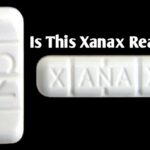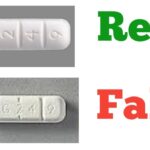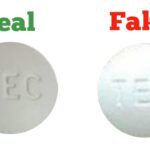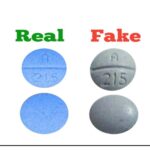What Does Real Xanax Look Like?
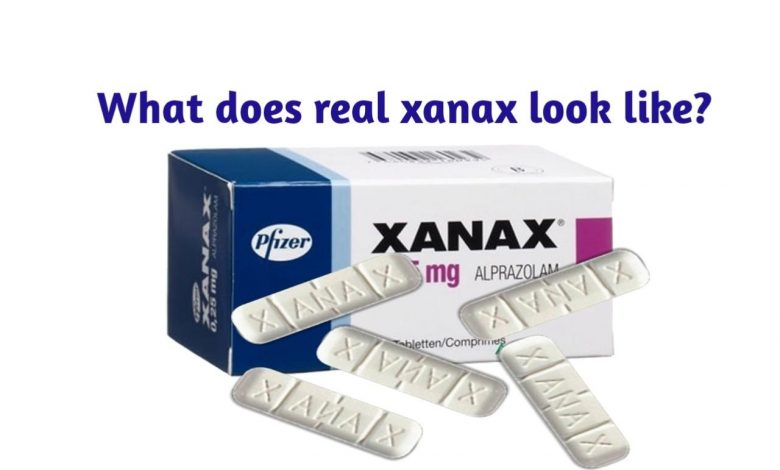
Xanax (alprazolam) is a benzodiazepine widely used in anxiety disorders because it provides rapid symptom relief for these disorders (within a week of beginning treatment) and shows no decrease in its effectiveness over time, even when used for several years.
Available data shows that the total annual number of Xanax prescriptions in the U.S. continues to rise with over 21 million prescriptions annually.
However, there has been a recent spike in the production of Illicit Xanax laced with Opioids. These fake pills including Xanax have been responsible for the death of hundreds of thousands of people according to provisional data from CDC’s National Center for Health Statistics which indicated that there were an estimated 100,306 drug overdose deaths in the United States during a 12-month period, an increase of 28.5% from the 78,056 deaths during the same period the year before.
Recently, the DEA also issued an alert informing all citizens about an increase in drug overdose deaths tied to counterfeit pills containing the powerful synthetic opioid fentanyl. Manufactured by Mexican drug trafficking (DTOs), and marketed as a medication such as oxycodone on the illicit drug market, these pills can be deadly. One pill can be enough to kill someone. Fentanyl is a synthetic opioid that is 100 times stronger than morphine. DEA lab analysis has identified pills ranging from .02 milligrams to 5.1 milligrams of fentanyl per tablet, with 26% of the counterfeit pills tested containing a lethal dose of fentanyl. A deadly dose of fentanyl can be as little as 2 milligrams. Xanax is also a controlled drug, which means it has the potential to cause dependence or to be misused.
What Does Real Xanax Look Like?
Understanding what a real Xanax looks like can be the difference between life and death but with advances in technology separating a real and a fake Xanax is becoming increasingly difficult.
The following tips will serve as a guide to purchasing genuine Xanax bars and help you avoid fakes;
Visual inspection
Visual inspection as stated by the World Health Organization (WHO) (1999) still remains the first step in identifying potential fake drugs irrespective of the analytical methods used. This is because such observation serves as a lead to identifying fake products even in the absence of knowledge of the physical characteristics of a genuine drug product. You are expected to examine carefully both the package and its content before purchase or use.
Visual Inspection of the Package
You should:
• Examine the package and check if it appears suspicious or different from what you previously know.
• Check if the security seal has been tampered with by looking for breaks or tears in the sealing tape and seals.
• Look for unusual fonts, font sizes, print color, and spelling errors.
• Check the legibility of the information on both the primary and secondary packages.
• Check if the batch number, expiry date, and manufacturer’s address on the secondary package are the same as that on the primary package.
• Check if the manufacturer’s address is traceable, that is, if it contains the exact location of the company and not just the country address.
• Check if the registration number (FDA number as the case is for products marketed or sold in the United States) is properly printed or if it appears to be tampered with.
Visual inspection of the Dosage form
At this stage, you are meant to check for differences in the physical appearance (color uniformity, size, shape, consistency, etc.) of the drug. As stated by WHO, commonly encountered physical defects that should be looked out for in tablets include:
• Excessive powder and/or pieces of tablets at the bottom of the container (from abraded, crushed, or broken tablets);
• Cracks or chips in the tablets, swelling, mottling, discoloration, a fusion of tablets;
• The appearance of crystal on the walls of the container or on the tablet.
• Hardening or softening, cracking, swelling, mottling, or discoloration of capsule shell should also be looked out for.
Source
The source of the drug also determines if you are buying fake Xanax bars or not. Buying Mexican Xanax exposes you to a lot of risks. Filling your prescription in a reputable pharmacy greatly reduces your chances of buying fake drugs while buying from illiterate and unqualified vendors who hawk drugs in buses, motor parks, and the streets increases your chances of buying fake drugs.
Price
This is another way of identifying Xanax. If the price is far cheaper than what is expected, then you have to think twice. However, this may not always be true, especially for some products (fake innovator/generic brands) which may be sold at the same price as genuine ones.
Unexpected side effect
Counterfeit Xanax most of the time contains substances other than the appropriate Active Pharmaceutical Ingredient (API). They may contain incorrect substances, improper dosage, or hazardous substances like Fentanyl which produce unusual side effects, and worsening medical conditions after taking it. The medication should be stopped once any of the above is noticed.
Fentanyl Test
Fentanyl testing is one of the most reliable ways of telling a fake from a real Xanax. A new University of Maryland study found fentanyl tops the list of drugs detected in overdose patients at two Baltimore hospital emergency departments. The finding suggests that hospitals and medical systems throughout the United States consider adding fentanyl, a potent synthetic opioid linked to most fatal overdoses in Maryland, to their routine drug testing panels. That is the conclusion of researchers at the University of Maryland School of Medicine (UMSOM) and the Center for Substance Abuse Research (CESAR) at the University of Maryland, College Park. Currently, fentanyl is not routinely included in these panels nationwide. The procedure described below can help law enforcement agents and public health officials to pick out fentanyl-laced powders and pills.
Steps
• Crush the pill or pour the powder into a clean bowl or test tube
• Add ¼ inch of clean water to the powder in the tube or bowl and mix properly
• Dip the end of the test strip into the residue for 15 seconds, remove, and lay on a clean flat surface
• Check the strip after 5 minutes, (manufacturer’s directions) results may be visible sooner: One line means fentanyl (positive) Two lines mean no fentanyl (negative) * If the strip does not either have one or two lines, the test is invalid.
According to the Pharmaceutical Research and Manufacturers of America, consumers who purchase medications online should avoid the following: sites that are located outside of the U.S. that do not indicate any physical address; sites that do not have a license by the relevant State Boards of Pharmacy; sites without a licensed pharmacist to answer questions; and websites that do not require a prescription.
Consumers who wish to purchase drugs over the Internet should look for websites that have the Verified Internet Pharmacy Practice Sites seal. These sites, which are created by the National Association of Boards of Pharmacy, are licensed pharmacies selling FDA-approved medications to discourage the sale of counterfeit drugs from illegitimate online sources.

